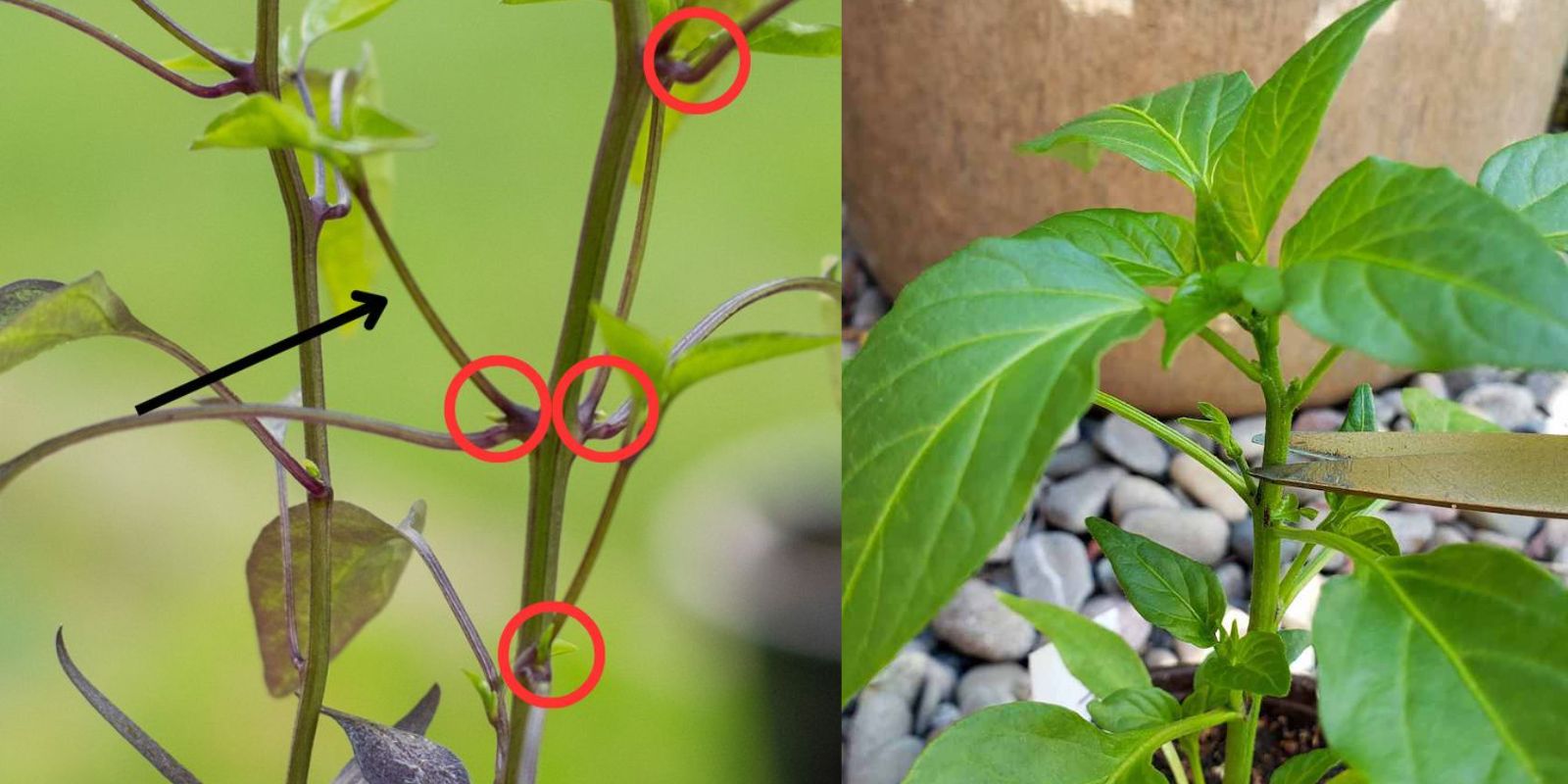Growing pepper plants is a rewarding endeavor for gardeners, both novice and experienced. One technique that can greatly enhance the yield and health of your pepper plants is topping. In this article, we’ll explore the benefits of topping pepper plants, how to do it correctly, and tips for maximizing your pepper harvest.
Understanding Topping
Topping refers to the process of cutting off the top portion of a plant. This technique encourages the plant to become bushier, which can lead to increased flower and fruit production. For pepper plants, which tend to grow tall and spindly if left unchecked, topping can help create a more robust plant structure.
Benefits of Topping Pepper Plants
- Increased Bushiness: Topping encourages lateral branching. When you cut off the main stem, the plant redirects its energy to the side shoots, resulting in a bushier appearance.
- Higher Yields: A bushier plant can support more flowers, which means more fruit. Topping allows for multiple branches to produce peppers instead of just one central stalk.
- Improved Airflow: A bushier plant can enhance airflow within the foliage, reducing the risk of fungal diseases. Better airflow also allows for more even light distribution.
- Easier Harvesting: A well-structured plant makes it easier to reach and harvest the peppers without damaging the plant.
- Enhanced Plant Health: By promoting a bushier structure, you can also help the plant withstand environmental stressors, such as wind or heavy rain.
When to Top Your Pepper Plants
Timing is crucial when it comes to topping pepper plants. Here are some guidelines:
- Size Matters: Wait until your pepper plants reach about 6-8 inches in height and have developed several sets of true leaves. This ensures that the plant is mature enough to handle the stress of topping.
- Growth Phase: Topping is best done during the vegetative growth phase. Avoid topping during flowering or fruiting, as this can stress the plant and reduce yields.
How to Top Your Pepper Plants
Topping your pepper plants is a straightforward process. Follow these steps for a successful topping:
1. Gather Your Tools
- Sharp Pruning Shears or Scissors: Use clean, sharp tools to make a clean cut. This minimizes stress on the plant and reduces the risk of disease.
- Gloves: While not necessary, wearing gloves can protect your hands, especially if you’re handling any plants with irritants.
2. Choose the Right Plant
- Select healthy pepper plants that are at least 6-8 inches tall with several sets of true leaves.
3. Identify the Cutting Point
- Look for the central stem of the plant. You want to make your cut just above a node, which is the point where leaves are attached to the stem. This encourages new growth to emerge from that point.
4. Make the Cut
- Using your pruning shears, trim off the top 1-2 inches of the main stem. Aim to cut just above the node to promote new lateral growth.
5. Observe and Care
- After topping, give your plants plenty of water and nutrients. Monitor the plants for new growth, which should begin to appear within a week or two.
6. Regular Maintenance
- Continue to care for your plants by watering and fertilizing them regularly. Ensure they receive adequate sunlight and consider additional pruning as needed for shape and health.
Additional Tips for Maximizing Your Pepper Harvest
- Fertilization: Use a balanced fertilizer to provide essential nutrients. A fertilizer high in phosphorus can encourage flowering, leading to more fruit.
- Watering: Ensure your pepper plants receive consistent moisture. Watering deeply but less frequently encourages deep root growth.
- Sunlight: Peppers thrive in full sun, so ensure your plants receive at least 6-8 hours of sunlight daily.
- Pest Control: Keep an eye out for common pests like aphids or spider mites. Use organic insecticides or introduce beneficial insects to keep pests at bay.
- Companion Planting: Consider planting companion plants like basil, which can enhance the flavor of peppers and repel harmful insects.
- Support Structures: If your plants become particularly bushy or top-heavy, consider using stakes or cages to support them.
Troubleshooting Common Issues
Even with the best care, you may encounter some challenges while growing peppers. Here are some common issues and solutions:
1. Yellowing Leaves
- Cause: Overwatering or nutrient deficiencies.
- Solution: Check the soil moisture and adjust your watering schedule. Consider using a balanced fertilizer.
2. Stunted Growth
- Cause: Lack of sunlight or poor soil quality.
- Solution: Ensure your plants are getting enough sunlight and amend the soil with organic matter.
3. Blossom Drop
- Cause: Stress from temperature fluctuations or inconsistent watering.
- Solution: Maintain a stable environment and consistent watering to reduce stress on the plants.
4. Pests
- Cause: Aphids, spider mites, and other common pests.
- Solution: Use organic insecticides or introduce beneficial insects like ladybugs to control pest populations.
Harvesting Your Peppers
Once your plants have produced fruit, it’s time to harvest! Here are some tips for a successful harvest:
- Timing: Harvest peppers when they are fully colored and firm. The exact timing will depend on the pepper variety.
- Tools: Use sharp scissors or pruning shears to cut the peppers from the plant to avoid damaging the branches.
- Storage: Store harvested peppers in a cool, dry place. They can also be frozen or preserved for later use.
Conclusion
Topping pepper plants is a simple yet effective technique that can lead to healthier, more productive plants. By following the steps outlined in this article, you can enhance your pepper yield and enjoy a bountiful harvest. Remember to keep an eye on your plants, provide them with proper care, and don’t hesitate to experiment with other gardening techniques to maximize your success. Happy gardening!
Call to Action
Now that you know the benefits and techniques of topping your pepper plants, why not give it a try in your garden? Share your experiences and results with fellow gardeners! 🌶️✂️ #PepperGardening #GardenTips #GrowYourOwnFood #UrbanFarming #HomeGardening #HarvestSeason

